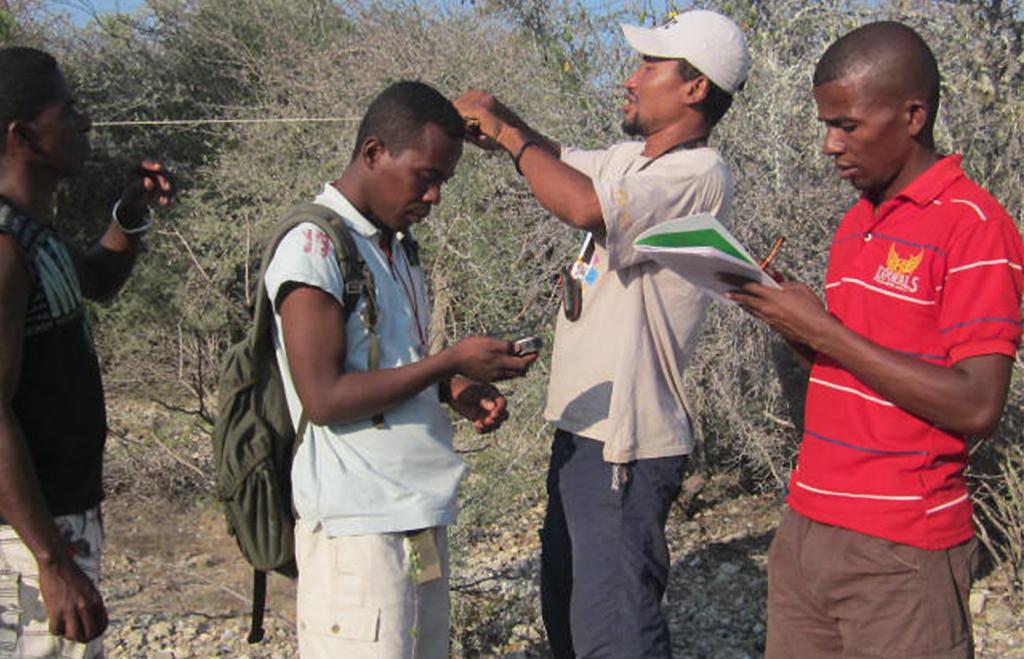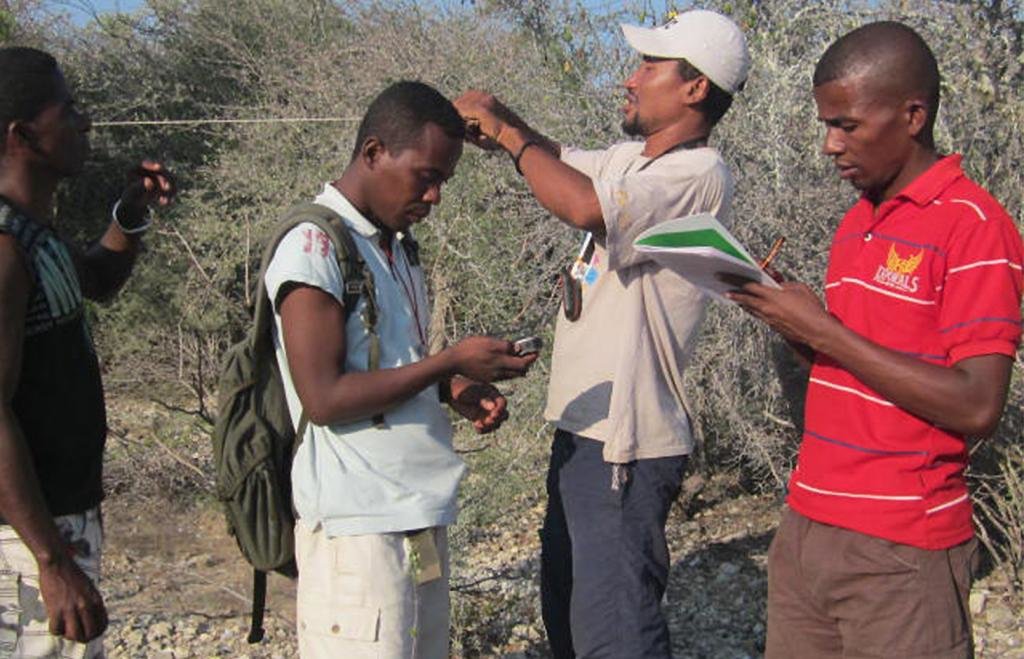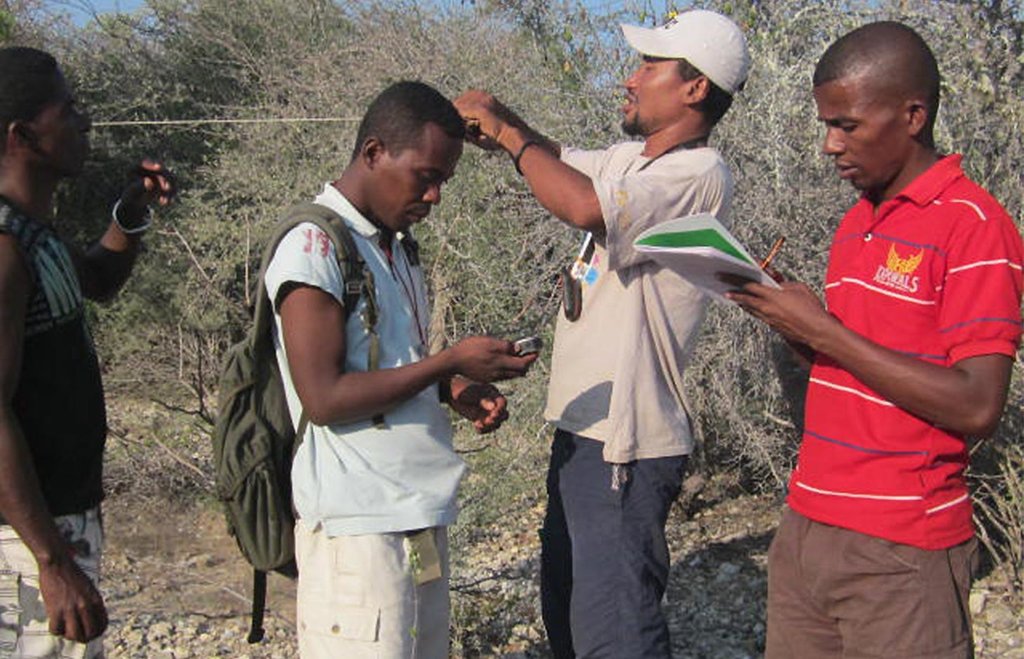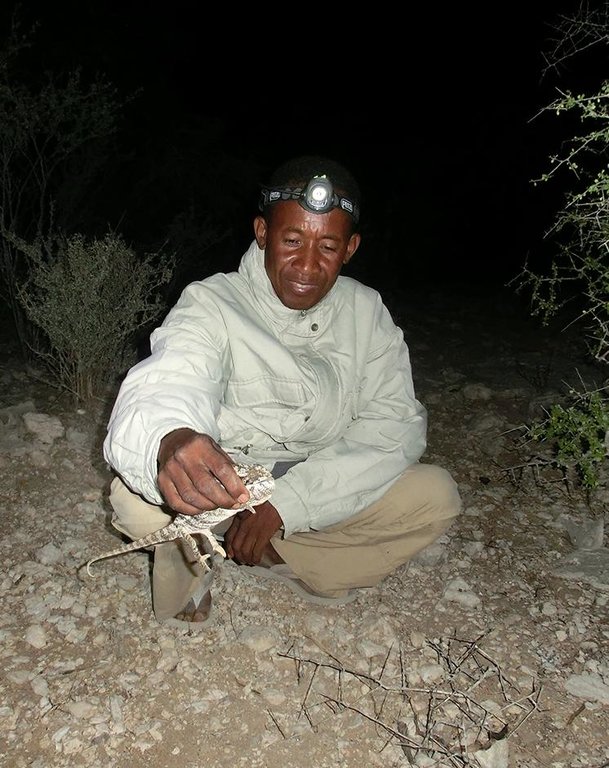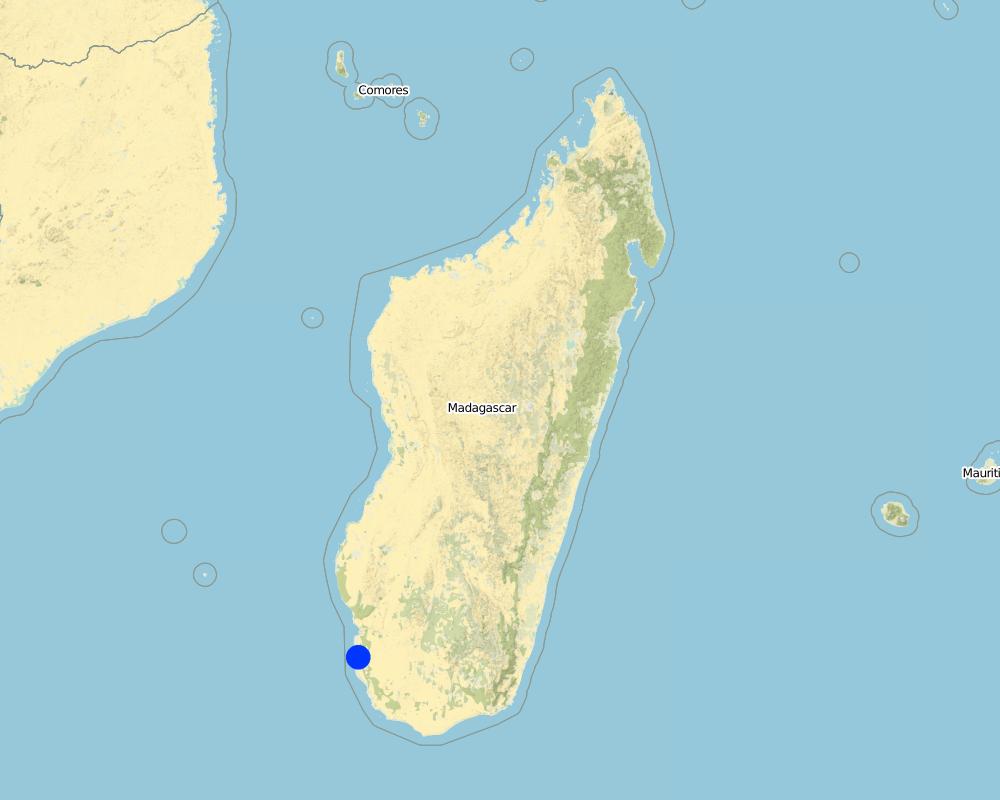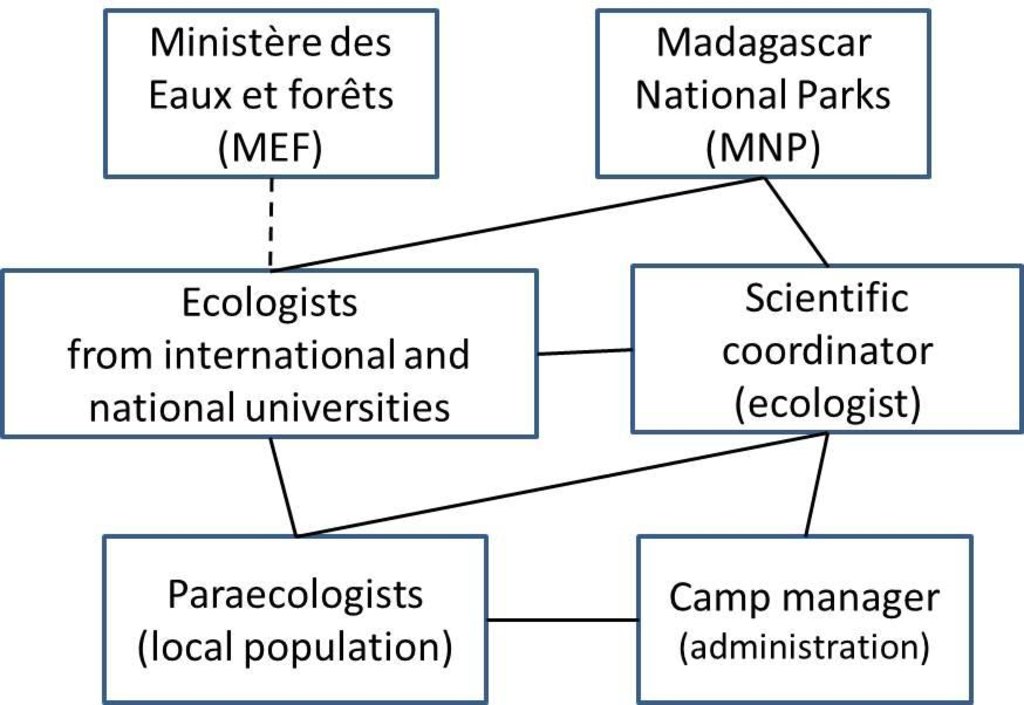Participatory monitoring and evaluation of long-term changes in ecosystems [Madagascar]
- Creation:
- Update:
- Compiler: Joachim Nopper
- Editor: –
- Reviewers: Fabian Ottiger, Deborah Niggli
approaches_2610 - Madagascar
View sections
Expand all Collapse all1. General information
1.2 Contact details of resource persons and institutions involved in the assessment and documentation of the Approach
SLM specialist:
Ratovonamana Yedidya R.
Université d'Antananarivo
Madagascar
SLM specialist:
Ganzhorn Jörg U.
Universität Hamburg
Germany
Name of project which facilitated the documentation/ evaluation of the Approach (if relevant)
Sustainable Landmanagement in south-western Madagascar (SuLaMa / GLUES)Name of project which facilitated the documentation/ evaluation of the Approach (if relevant)
Book project: Making sense of research for sustainable land management (GLUES)Name of the institution(s) which facilitated the documentation/ evaluation of the Approach (if relevant)
Universität Hamburg (UHH) - GermanyName of the institution(s) which facilitated the documentation/ evaluation of the Approach (if relevant)
University of Antananarivo - Madagascar1.3 Conditions regarding the use of data documented through WOCAT
When were the data compiled (in the field)?
11/04/2016
The compiler and key resource person(s) accept the conditions regarding the use of data documented through WOCAT:
Yes
2. Description of the SLM Approach
2.1 Short description of the Approach
Establishing a knowledge base and communication platform in collaboration with para-ecologists for monitoring changes in ecosystems, to aid decision-making in forest management.
2.2 Detailed description of the Approach
Detailed description of the Approach:
Aims / objectives: This approach strengthens knowledge about the response of biodiversity to environmental changes – namely land conversion, climate change induced impacts and climate-related extreme events, such as droughts and cyclones. Information generated can be used to inform regional authorities. They are then able to adapt management to current conditions, in order to better preserve biodiversity within the National Park. An important component of this approach is the integration of people from the local population as 'para-ecologists' who are trained in survey techniques for biodiversity monitoring. They directly observe changes in biodiversity, and share their knowledge with others in the area. The approach, thus, includes the sensitization of the local population to impacts of environmental change on biodiversity.
Methods: Under this approach, local assistants were trained in biodiversity monitoring techniques by researchers during their regular research activities. Part of the process comprised skills in species identification. Because the researchers had a limited period available for field work, training of these para-ecologists was a pre-requisite for implementation of long-term monitoring activities based on surveying at regular intervals. The surveys initiated by the researchers were plant phenology monitoring, regular capture, marking and recapture of Galidictis grandidieri (the giant striped mongoose) which is a flagship species in the Tsimanampesotse National Park, as well as reptile occurrence monitoring along transects. Monitoring procedures were established, and then continued by para-ecologists under the guidance of a Malagasy researcher who is familiar with ecological field work and acted as a ‘scientific coordinator’. The task of the scientific coordinator was data control and storage, planning of monitoring activities, as well as communication between national authorities, ecologists and para-ecologists. All survey data are available for scientific purposes and can be used to inform Malagasy authorities, or can be directly demanded by Malagasy authorities.
Stages of implementation: A basic research camp for monitoring was established within the Tsimanampesotse National Park in collaboration with Madagascar National Parks and WWF Toliara with third party funding. Four para-ecologists, two cooks and a guard constitute the team. The camp is maintained by a manager who is responsible for maintenance of buildings and electric facilities as well as provision of food. Surveying equipment is stored at the base camp. Computers and other necessary equipment were provided under the SuLaMa project. There are two para-ecologists trained on flora and a further two on fauna. Survey sites for monitoring of animal diversity and plant phenology were established by plant and animal ecologists in cooperation with the para-ecologists. Infrastructure for data acquisition and storage was established. This included the installation of electrical facilities as well as the provisioning of field books and computers. Technicians received language courses and learned computer operation. Regular exchange between the research camp and the national park authority, MNP, was established through a permanently employed scientific coordinator. This exercise resulted in a first workshop on survey techniques, in which staff of Madagascar National Park learned from researchers and para-ecologists.
Role of stakeholders: All survey data are available for scientific purposes and can be used to inform Malagasy authorities, or can be directly demanded from Malagasy authorities.
2.3 Photos of the Approach
2.5 Country/ region/ locations where the Approach has been applied
Country:
Madagascar
Region/ State/ Province:
Atsimo-Andrefana (South-West Madagascar)
Further specification of location:
Beheloke
Map
×2.6 Dates of initiation and termination of the Approach
Indicate year of initiation:
2011
Year of termination (if Approach is no longer applied):
2016
2.7 Type of Approach
- project/ programme based
2.8 Main aims/ objectives of the Approach
The Approach focused mainly on SLM with other activities (raising environmental awareness, environmental education)
Collect data on biodiversity to increase understanding of environmental change impacts. Use of this data to inform conservation managers. Involve the local population in this process to raise awareness and create ownership.
The SLM Approach addressed the following problems: Lack of knowledge about the changes in biodiversity within the national park; inadequate expertise in animal and plant identification; lack of knowledge about standardized sampling methods; data storage and dissemination not established.
2.9 Conditions enabling or hindering implementation of the Technology/ Technologies applied under the Approach
social/ cultural/ religious norms and values
- hindering
language barrier
Treatment through the SLM Approach: employment of a French teacher
knowledge about SLM, access to technical support
- hindering
No housing and facilities for para-ecologists, no infrastructure for data entry and storage as well as storage of equipment
Treatment through the SLM Approach: Establishment of a research camp as the base for all monitoring activities; Establishment of a database for storage of survey data. Keeping of a copy by the scientific coordinator who is able to distribute the data to researchers.
workload, availability of manpower
- hindering
Due to different reasons surveys were occasionally cancelled.
Treatment through the SLM Approach: Data quality of monitoring programs suffers if
surveys are not conducted at regular intervals. To avoid the cancellation of surveys, two persons were trained in the same survey techniques, so that a replacement is available. Nevertheless, occasional cancellations could not be avoided.
3. Participation and roles of stakeholders involved
3.1 Stakeholders involved in the Approach and their roles
- local land users/ local communities
members of local population that gain knowledge on biodiversity
- researchers
Para-ecologists are all men. Camp staff are equally divided between women and men. No woman occupied a top position however.
- NGO
MNP, WWF
- national government (planners, decision-makers)
MEEF
access to monitoring data and knowledge on status of biodiversity conservation effectiveness.
- international organization
BMBF
If several stakeholders were involved, indicate lead agency:
Researchers from different disciplines were involved. Scientific coordination was conducted by a Malagasy botanist.
3.2 Involvement of local land users/ local communities in the different phases of the Approach
| Involvement of local land users/ local communities | Specify who was involved and describe activities | |
|---|---|---|
| initiation/ motivation | external support | Training, identification of places for monitoring activities |
| planning | none | |
| implementation | external support | Monitoring within the National Park, giving results of research to National Park staff |
| monitoring/ evaluation | none | |
| Research | none |
3.3 Flow chart (if available)
Description:
Key partners for a biodiversity monitoring programme in southwestern
Madagascar. Collaborative research is focussed in and around Tsimanampesotse National Park. Ecologists train para-ecologists and develop long term monitoring programs. Scientific coordinator collects data and communicates results to MNP. Para-ecologists conduct surveys, a camp manager ensures research equipment is available and coordinates maintenance.
3.4 Decision-making on the selection of SLM Technology/ Technologies
Were decisions on the selection of the Technology(ies) made:
- by researchers
Explain:
Decisions on the method of implementing the SLM Technology were made by by reasearchers. n/a
4. Technical support, capacity building, and knowledge management
4.1 Capacity building/ training
Was training provided to land users/ other stakeholders?
Yes
- local population
Subjects covered:
Local men who were trained in animal and plant identification and survey techniques. They became specialists in their area of work and due to regular surveys, better understand the effects of environmental changes on plant phenology and the occurrence and behaviour of animals. They share their knowledge in their villages, thus contributing to raising awareness about the environment.
4.2 Advisory service
Do land users have access to an advisory service?
Yes
Describe/ comments:
Advisory service is inadequate to ensure the continuation of land conservation activities
4.3 Institution strengthening (organizational development)
Have institutions been established or strengthened through the Approach?
- no
4.4 Monitoring and evaluation
Is monitoring and evaluation part of the Approach?
Yes
Comments:
technical aspects were ad hoc monitored by government through observations; indicators: data collection by paraecologists was observed by researchers during training phase
Control of data quality aspects were ad hoc monitored by project staff through observations
Regular data collection aspects were regular monitored by project staff through
There were no changes in the Approach as a result of monitoring and evaluation
There were no changes in the Technology as a result of monitoring and evaluation: n/a
4.5 Research
Was research part of the Approach?
Yes
Specify topics:
- ecology
Give further details and indicate who did the research:
Research was exclusively undertaken within the national park. Extension of research activities into non-protected areas is aspired in collaboration with the local communities.
Research was carried out on station
5. Financing and external material support
5.1 Annual budget for the SLM component of the Approach
If precise annual budget is not known, indicate range:
- 10,000-100,000
Comments (e.g. main sources of funding/ major donors):
Approach costs were met by the following donors: international (German Ministry of Education and Research, BMBF): 100.0%
5.2 Financial/ material support provided to land users
Did land users receive financial/ material support for implementing the Technology/ Technologies?
Yes
5.3 Subsidies for specific inputs (including labour)
- equipment
| Specify which inputs were subsidised | To which extent | Specify subsidies |
|---|---|---|
| electric facilities and research equipment | fully financed | |
- construction
| Specify which inputs were subsidised | To which extent | Specify subsidies |
|---|---|---|
| construction & maintenance of research camp | fully financed | |
- infrastructure
| Specify which inputs were subsidised | To which extent | Specify subsidies |
|---|---|---|
| cart | fully financed | |
If labour by land users was a substantial input, was it:
- paid in cash
Comments:
Monthly salary for para-ecologists, as well as staff of research camp.
Research equipment included among others Computers, torches, GPS units, cameras. A cart was needed to transport persons and material.
5.4 Credit
Was credit provided under the Approach for SLM activities?
No
6. Impact analysis and concluding statements
6.1 Impacts of the Approach
Did the Approach help land users to implement and maintain SLM Technologies?
- No
- Yes, little
- Yes, moderately
- Yes, greatly
This approach is to evaluate long-term impacts of land conversions, gradual climate change and climate-related extremes (disasters) on biodiversity. Due to insufficient data because of the short time since implementation, impacts have not yet been assessed.
Did the Approach empower socially and economically disadvantaged groups?
- No
- Yes, little
- Yes, moderately
- Yes, greatly
By providing employment for some local people.
Did other land users / projects adopt the Approach?
- No
- Yes, little
- Yes, moderately
- Yes, greatly
Community-based monitoring is on the rise in Madagascar.
Did the Approach lead to improved livelihoods / human well-being?
- No
- Yes, little
- Yes, moderately
- Yes, greatly
Para-ecologist and associated staff of the research camp were continuously employed; a job opportunity that is rarely encountered within the study region. Awareness of the value of biodiversity has been raised.
Did the Approach help to alleviate poverty?
- No
- Yes, little
- Yes, moderately
- Yes, greatly
By providing employment for some local people.
6.2 Main motivation of land users to implement SLM
- payments/ subsidies
employment
- well-being and livelihoods improvement
regular salaries
6.3 Sustainability of Approach activities
Can the land users sustain what has been implemented through the Approach (without external support)?
- no
If no or uncertain, specify and comment:
Data collection by members of the local population is only valuable if data are subsequently quality-assured, analysed and evaluated. Thus without support from researchers this approach is of no value.
6.4 Strengths/ advantages of the Approach
| Strengths/ advantages/ opportunities in the compiler’s or other key resource person’s view |
|---|
| By employing people from villages surrounding the national Park in regular research activities as well as biodiversity monitoring, knowledge on dynamics of natural systems is experienced firsthand and can be transmitted to other members of the local population. This can be seen as an informal knowledge hub from which communities learn more about the ecosystem they live in. (How to sustain/ enhance this strength: Creating owenership might lead to a more sustainable resource use practice.) |
| Collecting data and knowledge to support evidence based decision making for biodiversity conservation (How to sustain/ enhance this strength: Maintain and carry forward the knowledge base and communication platform by ensuring funding ) |
6.5 Weaknesses/ disadvantages of the Approach and ways of overcoming them
| Weaknesses/ disadvantages/ risks in the compiler’s or other key resource person’s view | How can they be overcome? |
|---|---|
| Monitoring activities depend on continuous funding. Funding was provided by SuLaMa/BMBF. Efforts for a continuation of funding need to be undertaken throughout project implementation as well as after project has terminated. | The situation could be stabilized by mainstreaming monitoring activities in programs of in-country authorities, which is planned but has not yet been implemented. |
7. References and links
7.1 Methods/ sources of information
- field visits, field surveys
- interviews with land users
Links and modules
Expand all Collapse allLinks
No links
Modules
No modules


